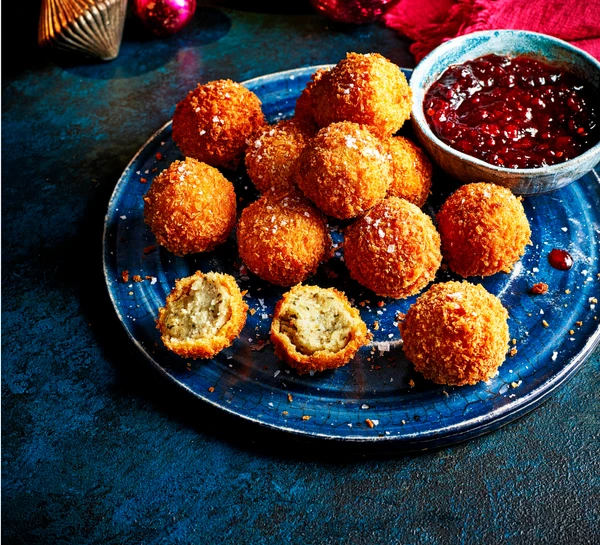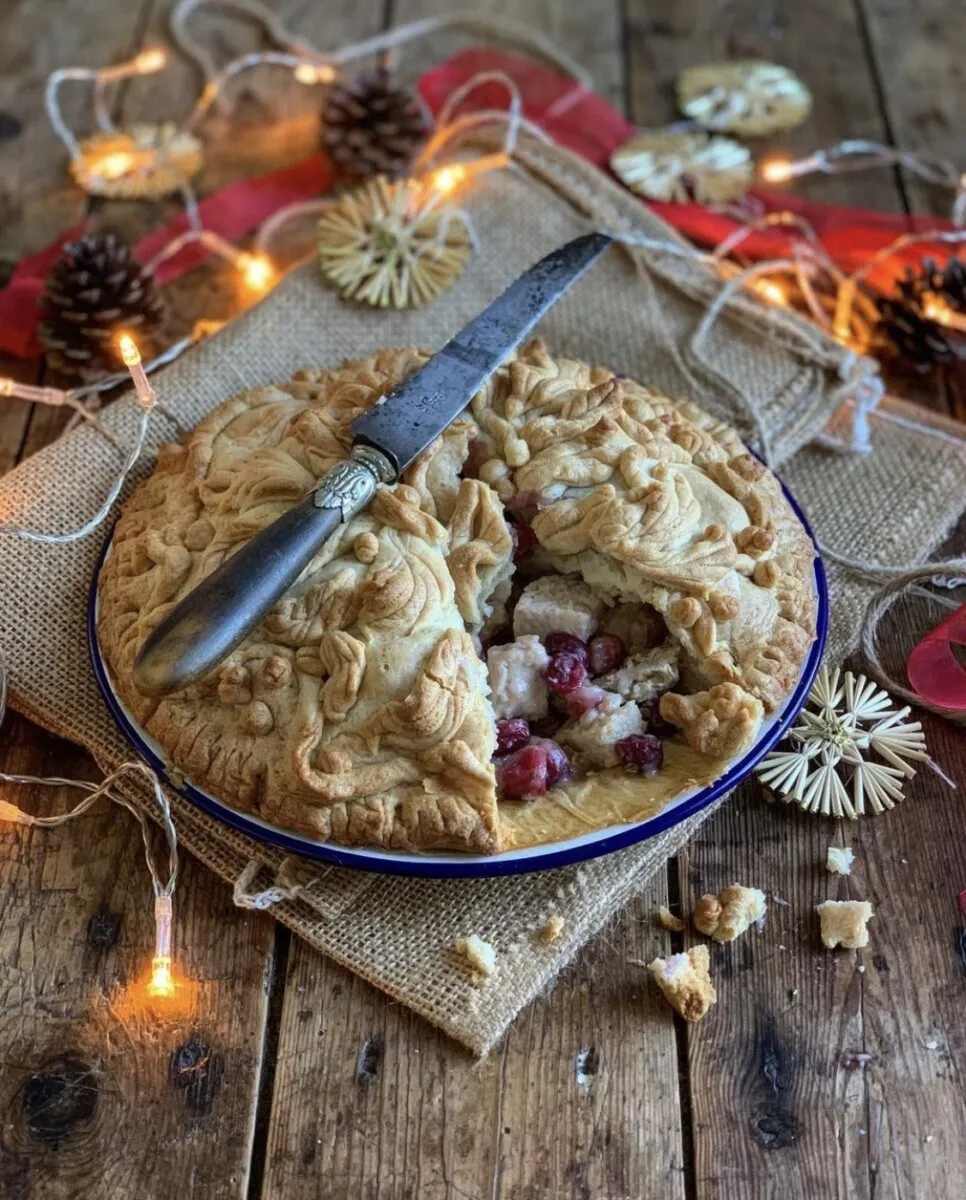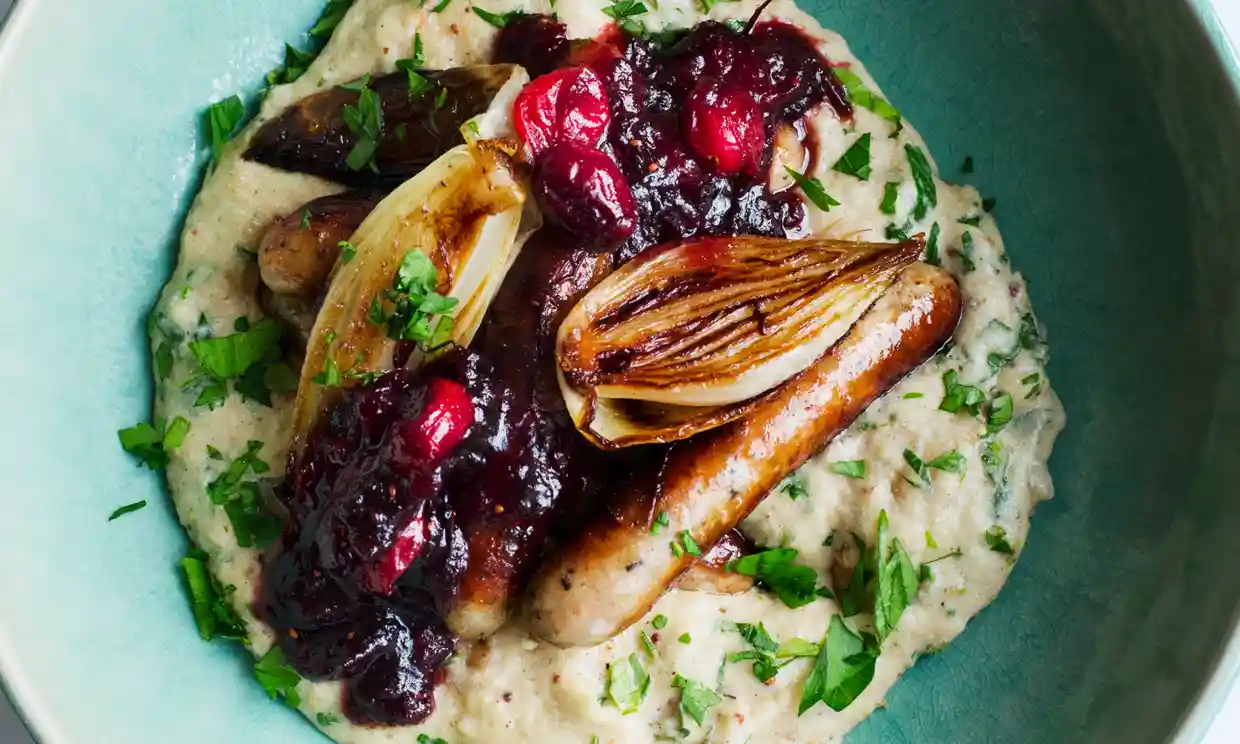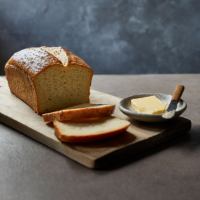How basic can you get? Bread sauce
- rosemary
- Jan 16, 2024
- 6 min read
"Bread sauce: pure, holy, special, gentle, and kind." Ruby Lott-Lavigna/Vice

(The version above is Easy bread sauce from James Martin, and it does perhaps epitomise the words in the quote.)

I had no idea what to write about today. Well in a way I had too many ideas - I just didn't fancy any of them. So I flicked through a few recent Guardian newsletters which had a few tempting ideas, and finally settled on this one -
Leftover brown bread sauce from their 'waste not' guru Tom Hunt, who says of his unconventional version:
"Save time and waste, and embrace the beige: use brown bread, keep the crusts on (even bread ends work here) and add a little grated onion instead of using and chucking a whole one. Your brown bread sauce will be more nutritious and flavourful for it"
I'm not really sure why I got sucked in. Maybe I just liked the photograph. And since it was a variation on an ancient classic, I thought there might be a few more. Besides it's such a seemingly bland, even repulsive thing which everyone seems to love.

Which just reminded me that David commented on last night's zucchini pasta that he thought it might be bland when he saw me cooking it, but he thought that it was really delicious. Alas I did not take any photographs. I think I always forget because I am so eager to eat. However, I will say that it was indeed delicious and the carbonara aspect to it all worked! I felt so very chuffed at that. I think, as Rachel Roddy said, the trick is to add the egg and cheese mixture off the heat whilst also adding the pasta water. In the end I did not add my back of the fridge pickled zucchini, because I realised that it was flavoured with turmeric amongst other things and was also sweetish, bot of which I thought was inappropriate. I also had no basil so added some oregano instead. Not a good idea I think. It was too strong a flavour. Parsley would have been a better substitute. But yes, I would certainly make this again.
But I digress - other than to say that bland is no bad thing, although I did say I would report back. Substitute bland with words like subtle and delicate and suddenly you have delicious, even sublime. Which I think is the thing about bread sauce. After all it's just bread with onion, milk, cloves, and bay leaf, cooked to a mush. And yet there are countless Britishers to whom it is the best thing about Christmas dinners.

"The idea of a bread sauce remains intensely baffling, possibly even disgusting, to any person who hasn't been brought up with British traditions, but I have, so far, been able to convert Italians, Austrians and even (admittedly with some condescension on their part) a French contingent. I regard bread sauce as not only my legacy from my mother, but every Briton's sacred and stodgy inheritance." Nigella Lawson
The photograph is of Her mother's bread sauce. And you would have to say that it does look a bit like porridge - one of my least favourite foods of all time. She is not alone, however in singing bread sauce's praises.
"Its strange, sloppy texture and comforting spices have the magical ability to make everything on the Christmas dinner plate taste better. It perks up the Brussels sprouts, calms the bite of the cranberries and transforms every slice of turkey — however overcooked and dry — into a succulent, flavoursome mouthful." Alison Richards/NPR
The other thing that partly explains its enduring popularity is that it is so very old, and yet is still eaten. After all flour, in the 17th century, took over the role as thickener for sauces.
"The switch to flour as a thickener became a cornerstone of a whole new way of preparing almost everything — from soups and sauces to entrees and desserts." Alison Richards/NPR
So what is the history of bread sauce?

"bread sauces go back to Medieval times though stock was used as a base more often than milk. Thick sauces were required then because trenchers (plates made of dried bread) would have gone soggy otherwise. Sauces thickened with flour or eggs would not work for that as they would either glue or custard respectively!" Neil Cooks Grigson
If you want an entertaining history of bread sauce, then you could do worse than visit the website The Pasta is a Foreign Pantry in which the writer - Ellie - investigates its history beginning with Galentyne, which dates back to 1390. She had a go at making it (and other later iterations of the idea):

"I blitzed a handful of white bread crusts with the ground spices and added tablespoon after tablespoon of white wine vinegar until I ended up with a fairly thick paste, which I pushed through a sieve before trying.
Perhaps I tried too much at first, because the first taste was like eating a tablespoon of acid. My lips tried to eat themselves as they curled back from the sourness and my eyes began to prickle but once the initial assault was over I began to appreciate the tartness and the aftertaste, which wasn’t too bad: slightly spicy and salty. I even went back for more, this time a small smear on a bit of ham and it was actually delicious. It reminded me a bit of a pickle, the sort of thing you’d serve with chutneys and mustards and piccalilli" The Pasta is a Foreign Pantry

She tried others too - a Henry VIII version that was more like stuffing than sauce, one made with red wine which was disgusting and a Hannah Glasse version which was almost what is made today. These days she settles for Delia's version which is shown here. Well when you are looking at something classically British Delia is the first stop for many.
And throughout she stresses its importance.
"the day is made or broken by the quality of the bread sauce ... Good bread sauce should be stodgy and carbohydrate heavy, with nary a hint of anything as healthy as a green herb in sight."
Neil Buttery of the website Neil Cooks Grigson, also sings the praises of bread sauce:

"Don’t you be put off, reader; the bread completely disintegrates to make a nice smooth sauce. Plus, the sauce is prevented from being at all gluey by the addition of butter or cream (or a mixture of the two)."
And he gives Jane Grigson's version of Bread sauce 9/10, saying: "I loved this; creamy, rich, but not sickly at all." and the best so far - by which he means the best of Jane Grigson's recipes in her book English Food that he had cooked so far. Bread sauce was recipe no. 123. So that's some compliment.
I do remember that we had bread sauce with our Christmas dinner but to be honest I do not remember if it was home-made or from a packet. Several writers nostalgically went for Colman's bread sauce in a packet, and there are obviously lots of other versions available in Britain. I don't know whether they are here. I also do not remember really liking it. Maybe. Or maybe it was just well - bland.
Another interesting thing was that Tom Hunt was really the only person to stray very much from the classic recipe, although Gordon Ramsay, like him, said that you could add the onions to the sauce. So I wondered if anyone had any ideas about what to do with the leftovers. And, of course they did, beginning with a kind of savoury bread pudding which I cannot quite picture, from Richard Corrigan:
“Take about half a pint of leftover bread sauce, add two eggs and mix well. Pour into a loaf tin and bake at 160C (140C fan)/325F/gas 3 for 45 minutes.” Chill, slice and serve topped with cold ham"
Here are some others that I found: Christmas leftovers stew with leftover bread sauce dumplings/delicious. UK; Cheesy bread sauce bon bons/This Bunting Bakes; Bread sauce and stuffing croquettes/Olive; Betwixtmas pie with Christmas leftovers/Lavender and Lovage and Chipolatas and bread sauce from Nigel Slater, which doesn't so much transform the sauce but uses it as a base for his chipolatas - Ottolenghi style - spread it on a plate and put things on top.
Or you can return the bread sauce to bread which is kind of ironic: Bread sauce sandwich loaf/Waitrose; Bread sauce rolls/delicious. UK.

Bread wasn't used as a thickener in Britain alone, of course. Everybody did it, and some of those remain in cuisines around the world today. This one is Italian - Tom Hunt's version of Bagnèt verd - a kind of bread pesto he says. Then there is ribollita, romescu, and I think skordalia sometimes is thickened with bread. I have sometimes made a mushroom soup from Elizabeth David which is thickened with bread, and I also remember a kind of gnocchi I was served in Lombardy that were made of bread. Well bread is flour isn't it?













Comments